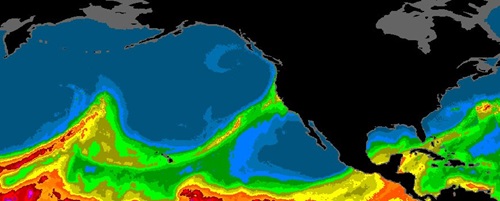Current Conditions

Satellite image of an atmospheric river bringing rain to California and other regions of the United States West Coast. Image courtesy of the Scripps Institution of Oceanography at UC San Diego
California has a Mediterranean climate characterized by warm, dry summers and mild, wet winters. The climate, however, can vary depending on geographical region. Precipitation, for example, is greater in the northern half of the State than the southern half.
California’s climate can also swing from wet years to dry years and back again. Climate change is increasing this variability.
On average, 75 percent of California's annual precipitation – made up of rain, snow, and hail – falls from November through March. The bulk of this precipitation occurs in just three months -- December, January, and February -- when California tends to get a small number of large winter storms called atmospheric rivers. A handful of atmospheric rivers -- or lack thereof -- during the winter season can determine if the year will be wet or dry.
You can now track the most current local and statewide water conditions down to your region, and even your neighborhood, on the California Water Watch website.
Detailed information for precipitation and surface water information is also available in the California Data Exchange Center (CDEC).
Statewide Precipitation Data
- Northern Sierra Precipitation: 8-Station Index - interactive
- San Joaquin Precipitation: 5-Station Index – interactive
- Tulare Basin Precipitation: 6-Station Index – interactive
Reservoir Storage Levels & Summary
Sierra snowpack accounts for one-third of the state's water supply.
- Daily Snowpack Readings - interactive
- Daily Snowpack Readings (PDF)
- Regional Snowpack Plots - interactive
